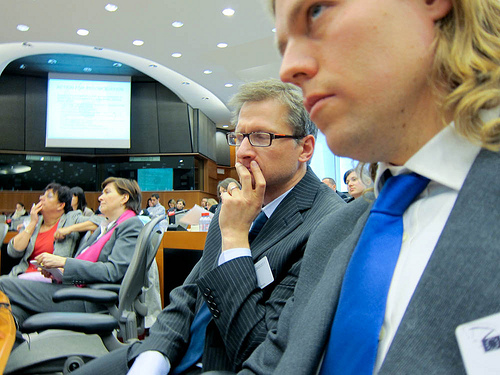Brussels or Bust: Making it Happen

If you would have asked me just even a year ago if I would be addressing a public hearing in European Union Parliament, I wouldn’t have even understood the question I don’t think. To think that what basically began as an idea, and a not even a terribly well thought out one for that matter for a school project five years ago, would become more and more of a real thing is still quite unfathomable.
Rolf Wiesemes and I, at the invitation of our partners at the Study Centre for National Reconciliation in Slovenia and the Hungarian presidency of the EU, were invited to present our work with Spomenik and the Pervasive Monuments project. Surreal wasn’t even the word for it, especially when I used the headphones like you see on TV while French flurried about periodically. Well it is Brussels after all.
Basically, this was way more interesting that any design conference ever could be, and I think its because of this idea of making things happen. Governments, believe it or not, make things happen. Businesses make things happen. If you’re like Laszlo Tokes, you’re used to making it happen. Before he was vice president of the EU, he was an ethnic Hungarian pastor in Romania who kicked off the revolution that got rid of Ceaușescu. You don’t make plans for it and hope somebody sorts it out for you.
With design, no matter what anyone tells you about on-demand manufacturing this and 140 character instantaneity, things that matter don’t happen overnight. They take long, hard slogs, countless hearings and subcommittee working groups on resolutions of condemnation and countless iterations. What most people would call design that I’ve done on this project has taken me about an hour in the past year. The rest of it has been everything from managing an international project, to hanging out with 80 year old ex-guerrillas looking at mass graves to spending years tracking down lists of dead people. I guess it’s all design too in some way. Putting it all together, making it happen.
